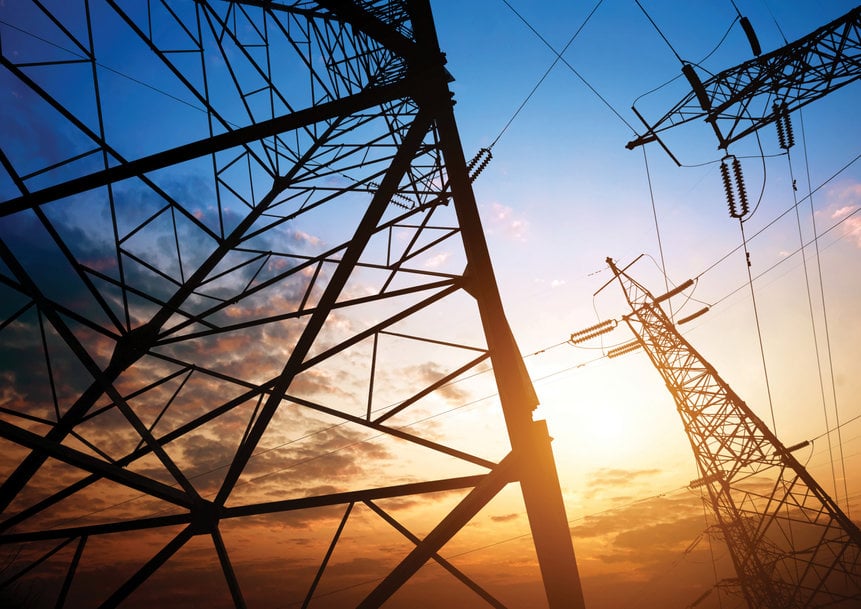www.industry-asia-pacific.com
25
'22
Written on Modified on
Copadata on the Digital transformation of the power industry
Future-oriented energy automation. Low-carbon energy transition confronts the power industry with great challenges.

Mastering dispersed networks, keeping renewable energy sources under control and centrally managing energy storage are all aspects that require investments in technology to manage correctly. Here, Alexander Punzenberger, President of COPA-DATA Central and Eastern Europe (CEE) explains how this can be dealt with using comprehensive software platforms.
The biggest necessity for the energy industry is providing constant availability. We expect electricity to stream from wall sockets whenever we need it, and likewise, gas from pipes. Natural incidents, such as trees collapsing on overhead power lines, should not cause a loss of supply. Nor should a hacker attack on the utility company’s headquarters.
Without reliability of supply, outages would regularly shut down industrial and commercial businesses, as well as most homes. Energy supply is, therefore, considered a critical part of national infrastructure.
The energy transition as a challenge
The move from fossil fuel energy sources to renewables has triggered a decentralization of energy production. Big coal, oil and nuclear power stations are being taken off the grid and replaced by wind turbines, photovoltaic systems or biogas facilities with cogeneration units.
The electricity generation of these decentralized operations is often subject to the weather conditions. This exacerbates fluctuations in production and increases the importance of solutions to store excess energy for later use.
Natural gas can be pumped under pressure into subterranean cavities, often left empty by exhausted former sources. Electrical energy can be either converted into potential energy and stored in pumped storage hydroelectric plants, stored electrochemically in rechargeable batteries or used to produce hydrogen for later thermal electricity generation. This, like our aforementioned grid complexity, only adds to the challenges of managing today’s energy supply.
Software for the power industry
The power industry already uses several platforms to automate its operations. zenon, for instance, facilitates highly efficient engineering and the automated operation of power supply equipment. Furthermore, zenon helps companies to better handle extraordinary operational situations and to continue operating critical infrastructures even under exceptional conditions.
In the energy industry, zenon can be used as an on-site process control system, for process visualization in the control room, or as a gateway to higher-level process control systems. Due to its open interfaces and communication protocols, the capabilities of the software platform to integrate hardware also extend to older devices and systems. zenon offers full support for the IEC 61850 and IEC 60870-5-101/104 standards for communication with, among other things, intelligent electronic devices (IEDs) in the field and with control-room equipment.
The zenon software platform also includes an easy to use, integrated soft PLC. This makes it easy to build future-oriented control concepts with a higher degree of automation even with legacy equipment. zenon supports high levels of operational reliability with seamless hot-standby redundancy. This reliably prevents data loss, even during the moment between server failure and takeover by the backup.
Location-independent response
Another key challenge for the modern energy grid is its dispersed nature. Due to the increasing number of small generation sites, including renewable plants with fluctuating power potential, energy grids are becoming decentralized.
Power generation and distribution systems are thus allowing both central and remote monitoring. Consider a grid using power for multiple hydroelectric plants, for instance. Typically, these generation plants are spread across a wide geographical area, making manual monitoring almost impossible. Unmanned stations should, nevertheless, be equipped to facilitate local control.
The cloud-based zenon Service Grid enables the monitoring and control of plants from control rooms at other connected installations or from company headquarters. Plant access via mobile application is provided as a standard option. Service technicians can securely access installations from anywhere, even while on the move, to determine whether or not an on-site intervention is required. This allows more flexible maintenance resource deployment and better integration of decentralized generation sites
The energy industry is experiencing significant changes. The transition to low-carbon energy sources creates a whole host of challenges related to reliance and storage – which is exasperated by existing infrastructure of the industry. This, paired with high security needs and challenges related to decentralized networks, necessitates an investment in technology to manage these assets.
www.copadata.com

